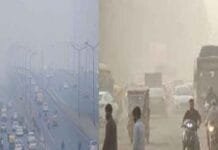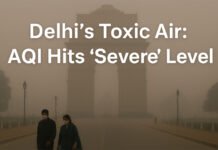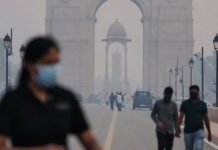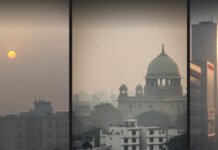The New Delhi government has launched a cloud-seeding experiment, with the first artificial rainfall slated for October 29, 2025, weather permitting. The pilot, carried out in collaboration with Indian Institute of Technology Kanpur (IIT Kanpur) and backed by the India Meteorological Department (IMD), aims to force rain into the capital’s polluted skies and help wash away fine particulate matter that blankets the city each winter.
However, the ambitious plan has raised concerns among climate scientists and air-quality experts who caution that cloud seeding may be little more than a temporary fix—one that fails to address the deeper causes of pollution.
What the Trial Involves (H2)
The cloud-seeding operation began with a trial flight on October 24 over Delhi’s northern perimeter, during which specially equipped aircraft released flares laden with silver iodide and sodium chloride compounds into clouds. According to Environment Minister Manjinder Singh Sirsa, “a trial seeding flight was done … in which cloud-seeding flares were fired.”
Chief Minister Rekha Gupta described the initiative as a “historic step” in the city’s fight against air pollution, noting that if conditions remain favourable the city may see artificial rain on October 29.
Officials emphasise key operational facts:
The trial flight looped from Kanpur via Meerut, Khekra, Burari, Sadakpur and Bhojpur, then back.
Five experimental cloud-seeding sorties are planned, each covering roughly 100 km² over northwest & outer Delhi zones.
The success of the seeding depends on suitable cloud cover and humidity—two conditions that are often absent during Delhi’s winter inversion layer.
Why This Has Come About (H2)
Delhi regularly ranks among the world’s most polluted cities. Cold winter air trapped beneath inversion layers prevents dispersion of pollutants emitted by traffic, industry and crop-burning across the wider NCR region. In 2024, Delhi’s PM2.5 levels rose by 6 % even before the deep-smog season properly set in.
Given the urgency of the pollution crisis, the Delhi government sees cloud seeding as an innovative technology intervention—“science-based solution,” as Minister Sirsa puts it—for rapid relief when the air becomes dangerously toxic.
Expert Concerns & Scientific Scrutiny (H2)
Despite the fanfare, many scientists warn this is not a silver bullet. Professors Shahzad Gani and Krishna AchutaRao described the plan as a “textbook case of science mis-applied and ethics ignored,” warning that the long-term effects of the seeding chemicals (such as silver iodide) on soil, agriculture and health are under-studied.
Key criticisms include:
Cloud seeding only works if there are clouds with sufficient moisture; Delhi winters often lack such conditions.
It addresses symptoms (airborne dust and particulate matter) rather than root causes (vehicular emissions, industrial output, crop residue burning).
The effectiveness of inducing rainfall is modest and variable; global research shows mixed results.
What This Means for Delhi’s Residents & Policy (H2)
For residents, the immediate takeaway is clear: keep an eye on October 29 if the weather cooperates, because you might see engineered rain. But for policymakers and urban planners, the story is broader.
If artificial rain can be delivered reliably, it may offer episodic relief during severe smog days—lessening PM2.5 peaks and giving hospitals a break.
But reliance on weather-modification distracts from controlling sources: fleet emissions, coal/biomass burning, construction dust and regional crop fires.
Cost-effectiveness is also under scrutiny—the project carries a ₹3.21 crore initial outlay plus five trials.
From a risk-governance standpoint, repeated use of seeding agents over densely populated areas raises ethical questions and regulatory uncertainty.
Practical Steps for Residents
In the meantime, Delhi residents should continue the usual precautions:
Use air purifiers and n95-type masks on high-smog days (AQI “very poor” or worse).
Monitor mobility allowances and avoid outdoor activity in early morning/evening when pollutants spike.
Stay updated about scheduled city initiatives like artificial rain, and media-announcements about cloud-seeding flights.
Understand this is not a substitute for structural clean-air policies—so maintain pressure on local and regional authorities for long-term reforms.
Conclusion
Delhi’s upcoming cloud-seeding experiment reflects growing desperation in India’s capital to extract quick relief amid a worsening air-pollution crisis. Whether it will provide genuine benefit—or merely symbolic relief—remains uncertain. But the move does send an important signal: technology is being marshaled in the fight against smog. Ultimately, though, unless emissions sources are tackled, engineered rainfall may become a stop-gap rather than a solution. For a city choking on its own haze, even a few clean hours of air could make a difference—but the long haul requires much more.
















